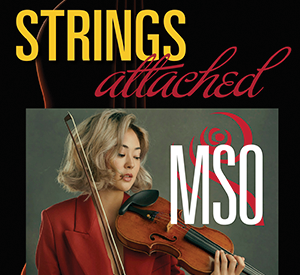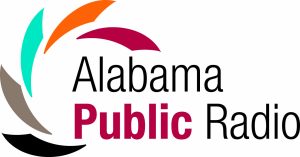Sponsored by:
Dick & Betsy Otts
Scott Speck, conductor
Simone Porter, violin
Arvo Pärt – If Bach Had Raised Bees*
b. 1935
Felix Mendelssohn – Violin Concerto, e minor, op. 64
(1809-1847) Simone Porter
INTERMISSION
Robert Schumann – Symphony No. 3, E-flat major, op. 97 “Rhenish”
(1810-1856)
Speck Speaks: A Tribute to Three German Composers
“Our Strings Attached program pays tribute to three German composers – each influenced by the last.
Arvo Pärt was Estonian, but he devoted this short and delightful piece to Johann Sebastian Bach, who could rightfully claim to be the father not only of German music (and no fewer than 20 children!), but also of the entire compositional tradition that we still celebrate today. If Bach Had Raised Bees truly does ask the age-old question, What if the venerable Baroque master had actually been a beekeeper? Many of the effects in the piece are modern, and even wacky – but the unmistakable language of Bach’s chorales permeates the piece, and in fact it ends with a loving tribute to Bach’s keyboard Prelude in B minor.
Bach himself was the biggest influence on the German late classical composer Felix Mendelssohn. It’s possible that we would not even know of Bach’s genius if not for Mendelssohn, who resurrected and conducted (from memory!) several of Bach’s masterpieces in their shared hometown of Leipzig, after they had been forgotten for more than half a century. Besides championing Bach’s music, Mendelssohn is best known for his five symphonies, his beautiful songs, and his concertos – including the violin concerto you will hear today. And talk about memorable – we performed this concerto at my very first concert as Music Director of the Mobile Symphony!
And Mendelssohn in turn had a great influence on the early Romantic composer Robert Schumann. Though he was just a year younger, Schumann was extremely forward-looking and paved the way for much of the Romantic movement in music. Felix Mendelssohn advised him on his compositions and even conducted the premiere of Schumann’s first symphony. So this program is a throughline, from Bach (as a beekeeper), through Mendelssohn, to Schumann; from Baroque to Classical to Romantic – all in one concert.” – Scott Speck
Program Notes by Sarah Ruddy, Ph.D.:
Pärt, If Bach had Raised Bees
Arvo Pärt
If Bach had Raised Bees (Wenn Bach Bienen gezüchtet hätte…)
BORN September 11, 1935 | Paide, Estonia
Contemporary composer Arvo Pärt has worked within and created a variety of compositional techniques during his long career. He has collaborated with performers of early music to create modern, mystical, minimalist music. He has used collage technique to juxtapose multiple styles and quotations into a single work. And he created a system of serial composition called Tintinnabuli, in which small, dissonant intervals create a sonic ringing, like the sound of a small bell. (Tintinnabulum is Latin for bell.) First composed in 1976 (revised in 1984 and 2019), If Bach had Raised Bees has aspects of each of these techniques.
Borrowing an old form of musical tribute, Pärt created a cipher on the word “Bach” by spelling the Baroque composer’s name using the German musical alphabet: B (equals B-flat in the German musical alphabet) – A – C – H (B-natural in the German musical alphabet). He then created a formula based on this cipher that results in the close intervals that he desired for Tintinnabuli. The violas play “Bach” (B-flat – A – C – B-natural), while the cellos simultaneously start on A, the first violins on C, and the second violins on B-natural (H), each following with the same melodic intervals as the violas. The effect of these closely stacked, dissonant intervals is a harmonic ringing tone, that buzzes like a bee. To further evoke the buzzing insects, the string players perform tremolo, rapidly moving their bows up and down (literally trembling) against the string. The result is truly the sound of a swarm of bees.
In case the listener didn’t hear the cryptic reference to Bach in the first part of the piece, Pärt quotes the Baroque composer in the last part. To close the piece, he borrows Bach’s Prelude in B minor from the first book of the Well-Tempered Clavier. But, played at half-speed and with the added ringing of Tintinnabuli, it is clearly the work of one of the most-often performed composers of contemporary classical music, and not the music of the Baroque master.
This piece is scored for flute, oboe, clarinet, bassoon, French horn, piano, percussion, and strings.
Mendelssohn, Violin Concerto
Violin Concerto, Op. 64
Felix Mendelssohn
BORN February 3, 1809 | Hamburg, Germany
DIED November 4, 1847 | Leipzig Germany
Felix Mendelssohn’s Violin Concerto is one of the most frequently performed violin concertos in the repertoire. Its success following its 1845 premiere was immediate and by the end of the 19th century, it was considered one of the greatest violin concertos in the repertoire. The violinist Joseph Joachim said in 1906, “The Germans have four violin concertos. The greatest, most uncompromising is Beethoven’s. The one by Brahms vies with it in seriousness. The richest, most seductive, was written by Max Bruch. But the most inward, the heart’s jewel, is Mendelssohn’s.” The piece is so well-known that modern audiences may not realize how this innovative work would have struck the ear of its original audiences.
The innovations begin just seconds into the work. A typical classical concerto includes a double exposition, in which the orchestra presents the primary melodic material before the soloist’s entrance. Audiences would have been accustomed to seeing a soloist standing silent at the front of the stage for several minutes at the start of a concerto. However, in this concerto, the audience only hears a measure and a half of orchestra before the soloist enters and presents the entire melodic theme.
Mendelssohn surprised his audience again in the middle of the first movement when the cadenza arrives much earlier than expected. In a typical classical concerto, the cadenza occurs just before the end of the movement. In this case, Mendelssohn places it before the recapitulation (the repeat of the primary melodic material). He then carries some of the figurations from the cadenza into the soloist’s part during the remainder of the movement. This bridge from the cadenza into the rest of the movement would not have been possible without the cadenza being composed rather than improvised, which was until then the standard. With this innovation, Mendelssohn effectively killed the practice of improvised cadenzas.
Tired of the common practice of clapping between movements, Mendelssohn took away the opportunity for the audience to do so. All three movements of the concerto are played attaca — without break. While Beethoven had attached his second and third movements in his Violin Concerto and the Emperor Concerto, Mendelssohn was the first to string together all three movements. Listen closely for the bassoon to provide the link between the first and second movement, playing a sustained note that notches up one pitch to move the piece from minor to major.
Perhaps this concerto’s most important innovation was that it was born out of a collaboration between the composer and its intended soloist. Working closely with his friend and colleague Ferdinand David, Mendelssohn was able to create a concerto that was true to his artistic voice while also extremely gratifying for the soloist. Perhaps this is the reason that it became and has remained the “heart’s jewel” of violin concertos.
This piece is scored for 2 flutes, 2 oboes, 2 clarinets, 2 bassoons, 2 horns, 2 trumpets, timpani and strings.
Schumann, Symphony No. 3
Robert Schumann
Symphony No. 3, “Rhenish”
BORN June 18, 1810 | Zwickau, Germany
DIED July 29, 1856 | Endenich, Germany
In September of 1850, Robert Schumann arrived in Düsseldorf to assume a new position as municipal music director. This was his first time in the Rhineland — as that region was called — having spent his life thus far in Saxony. Just a few weeks after arriving in Düsseldorf, Schumann traveled thirty miles by train to Cologne to see the Cathedral, which had recently been completed after six centuries of construction. The Cathedral — the largest Gothic building in Northern Europe — left quite an impression on Schumann. He returned later that fall to witness the Archbishop’s elevation to the position of Cardinal. The awe-inspiring building and solemn ceremony inspired Schumann to compose his “Rhenish” Symphony.
Schumann did not like to tell his listeners what they should hear. He worried that “if the eye is once directed to a certain point, the ear can no longer judge independently.” But he did leave a few clues to the “Rhenish” sounds of his Third Symphony. The second movement, based on folk dances, was originally titled “Morning on the Rhine.” In it, he depicts a river, with flowing notes creating interwoven melodies. The fourth movement initially included the title “In the character of an accompaniment to a solemn ceremony.” Schumann later abbreviated the title to read simply “Solemn.” In this movement, he depicts the grandeur of the Cologne Cathedral and its religious ceremony. He saves the entrance of the trombones for this movement, which culminates in an impressive fanfare that leads without break into the fifth and final movement of the Symphony.
Schumann conducted his “Rhenish” Symphony at its premiere in February 1851 at one of Düsseldorf’s subscription concerts. It was so successful that it was repeated in March of the same year. This Symphony is a celebration of the Rhineland penned by a composer optimistic about his new home. Sadly, it was one of very few triumphs during Schumann’s time in Düsseldorf. Overwhelmed by the demands of his position and defeated by repeated failures, Schumann attempted suicide just three years later, throwing himself into the frozen Rhine River. He was rescued by a bystander and committed to an institution, where he lived out the remainder of his life.
This piece is scored for 2 flutes, 2 oboes, 2 clarinets, 2 bassoons, 4 French horns, 2 trumpets, 3 trombones, timpani and strings.
*The presentation of this work is made possible by a generous donation to MSO’s Symphonic Innovations Fund




